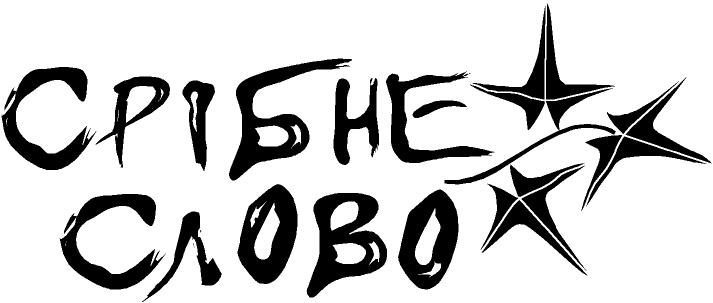- Рубрики
- Філософія, психологія, педагогіка
- Історія
- Політика, право
- Економіка
- Математика
- Фізика
- Хімія, хімічна технологія
- Біологія, валеологія
- Геодезія, картографія
- Загальнотехнічні науки
- ІТ, комп'ютери
- Автоматика, радіоелектроніка, телекомунікації
- Електроенергетика, електромеханіка
- Приладо-, машинобудування, транспорт
- Будівництво
- Архітектура, містобудування
- Мовознавство
- Художня література
- Мистецтвознавство
- Словники, енциклопедії, довідники
- Журнал "Львівська політехніка"
- Збірники тестових завдань
- Книжкові видання
- Наукова періодика
- Фірмова продукція
Instructions to Authors – The academic journal “Architectural Studies”
Instructions to Authors – The academic journal “Architectural Studies”
Manuscripts of the articles should be addressed to the Editor-in-chief:
Prof. Bohdan Cherkes
Lviv Politechnic Nathional University
12, Bandera Str., 79013 Lviv
Electronic versions hould be submitted by e-mail to: shuldanlarisa@gmail.com
General:
The content of the manuscript should correspond to the journal scope and be written (if translated manuscript should be certified by professional translator) in English, otherwise it will be automatically returned to author(s) without review. Ukrainian version of the manuscript should completely correspond to English version.
The Editorial Board accepts manuscripts for publishing in the following fields:
• history and restoration;
• architecture;
• urbanplanning.
After manuscript review, the author(s) receives a copy of the review with comments. Corrected manuscript must be sent back to the editor within 5 days since the copy receiving. Otherwise, Editorial Committee is empowered to reject or postpone the publication.
Instructions for authors:
Prepare the text in Microsoft Word 2003–2007. Printouts of both Ukrainian and English versions of the manuscript, as well as the electronic one, must be sent to the Editorial Board.
Printing on A4 paper (210297 mm).
Indents: left – 18 mm, right – 25 mm, top – 20 mm, bottom – 27 mm. Font – Times New Roman, size 10,5 – point with line spacing 1,1. All pages, starting with the front one, must be numbered.
Figures and tables must be inserted into the text and additionally submitted by separate files.
Composition of the manuscript:
1. The first page of the article should contain:
– Full first and last names of the author and all collaborators.
– The title of the article typed in capital letters, font size – 14
– Full mailing address of author’s (authors’) working place, including country.
– Name and e-mail address of the author(s) to whom the correspondence and reprints should be sent.
2. Abstract should contain no more than 50 words. It should represent the essence of the article and its novelty.
3. Keywords (a maximum of 5–6) should reflect the contents of the article and be specific to the field of study, avoiding general forms of wordiness, abbreviations (only abbreviations conventional in the certain field are allowed).
4. Introduction should be brief and clear. It may indicate the connection with previous works.
5. All materials and methods used for obtaining results of the article should be depicted in the experimental or basic theoretical section. The subheadings for different sections may be used (e.g. 2.1 (2.1.1., 2.1.2…), 2.2.)
6. Results should be present edaccurately and clearly. The Discussion should deal with the results and depicts their analysis. Subheadings can be used in this section. Discussion of the already known data should be avoided. Descriptions of methods or examples of achievements, formulas should be presented in experimental or theoretical base section.
7. Conclusions should emphasize main achievements of the work, underline its importance and give examples of possible application.
8. The gratitude for financial support, technicalas sistance and other forms of assistance can also be mentioned at the end of the article.
9. References should be numbered in the order of their appearance in the text in square brackets. Names of the books should be referenced, titles of articles – shouldn`t. Authors’first and lastnames and names of journal soriginally written with Cirilic alfabeth should be typed with Latin letters without translation.
Example:
Book: The author (s) or editor (s), book title or chapter, publisher, city, year.
[1] Kovalskiy D. and Plekhov V.: Neorganichna Khimiya. Naukova dumka, Kyiv 1990.
[2] Hess M.: High Performance Polymers [in:] W. Brostow (Ed.), Performance of Plastics. Hanser, Munich-Cincinnati 2000, 277–289.
Journalpaper : Authors (£ 4), journal (all the words with a capital letter), year, volume, initial page
[3] Yamamoto T., Furuhata T., Arai N. etal.: Energy, 2001, 26, 239.
[4] Novakivskiy V., Gerber D. and Malynovskiy D.: Dopovidi Nats. Akad. Nauk Ukrainy, 2007, 66, 198.
Patents: Authors, country and patent number, date of publication
[5] Vaynberg M., Horn H. And Horn R.: Pat. US 6981377, Publ. Oct. 13, 2006.
Conference: author, title of the conference, country, city, year, initial page.
[6] Young C. And Jordan T.: Proceed. 10thAnnual Conference on Engineering, Greece, Patras 2008, 34.
10. Illustrations (figures, graphics, photos) must be inserted in the text and be given by separate graphic files as separate objects, suitable for corrections or changes, and which fit the page size. All illustrations should be signed and numbered (if more than one) under the illustrations, with centered alignment, fontsize – 9.
Photos and photocopies must be of high quality, suitable for copying.
11. Tables should be formatted in Excel for Windows and MS Word. The main table font – 10, heading font – 10,5. Heading is placed in the center of the table with bold font and numbered (if more than one) at the right margin of the table, italics font.
12. Formulas should be centred and numbered in parentheses at the right margin.
Units. All data should be given in International System of Units (SI units). If other units used, provide SI equivalents.



















